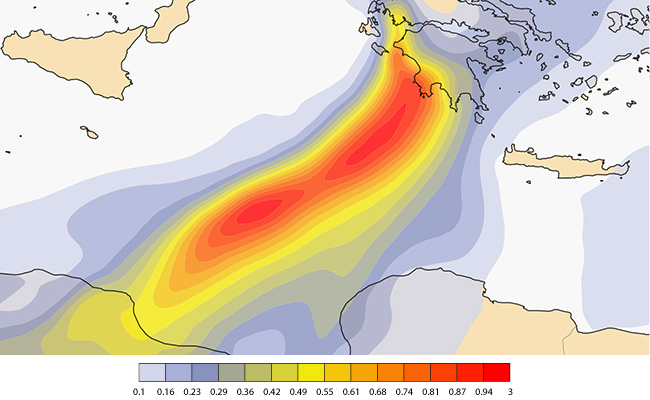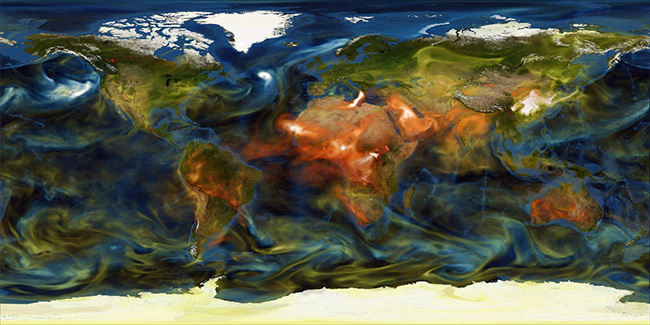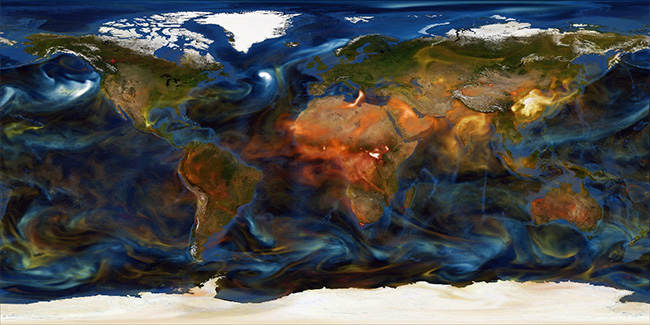

Changes to the aerosol model of the Copernicus Atmosphere Monitoring Service (CAMS) global forecasting system operated by ECMWF have resulted in more accurate forecasts.
CAMS has also added two new satellite datasets to the observations that help to define the initial state on which forecasts are based.
These are the Polar Multi-Sensor Aerosol Product (PMAp) provided by EUMETSAT and ozone observations from the Ozone Mapping Profiler Suite (OMPS) provided by NOAA through the EUMETSAT third-party programme.
The changes mean that the EU-funded service now provides better predictions of the amount of dust, sulphate and biomass combustion particles in the atmosphere.
The upgraded global forecasting system was made operational on 24 January.
Deputy Head of CAMS Richard Engelen said: “A clear improvement of the aerosol forecast, with less dust and sulphate and more organic aerosols, has been documented, while the impact of the upgrade on forecast quality of chemical species is mostly neutral.”

Forecast charts available on the CAMS website provide powerful zoom functionality and point-and-click features which enable detailed information for specific locations to be called up. This 36-hour forecast of Aerosol Optical Depth at 550 nm valid at 1200 UTC on 18 January reveals a dust plume stretching across the Mediterranean from northern Libya to southwestern Greece. The same plume is also visible in the top image, which shows the same forecast at a larger scale.
The upgrade was successfully implemented into operations by ECMWF’s Production Section, which is responsible for the testing and integration of all operational models.
Validation
The improved forecasting system ran in test mode for several months before it was made operational.
The CAMS validation team carefully assessed the output to ensure the quality of the daily analyses and forecasts.
Their report, which is available on the CAMS website, was published at the end of November and formed the basis for the decision to go ahead with the implementation of the improved production system.


These 12-hour CAMS forecasts of dust (orange), sea salt (blue), biomass burning (red) and sulphate aerosols (yellow), valid at 12 UTC on 18 January 2017, illustrate some of the differences between the old system (top) and the upgraded system (bottom). For example, the upgraded forecast shows generally less sulphate, less dust and more organic aerosols from biomass burning.
Open data
CAMS monitors and predicts the composition of the atmosphere globally with a special focus on Europe.
The service provides policymakers, businesses and citizens with reliable information on the concentration of pollutants in the atmosphere that affect air quality and act as drivers of climate change.
CAMS forecasts can be accessed directly through the ECMWF data server or through operationally supported FTP access, as described on the CAMS website.
The CAMS User Support Team is happy to answer any queries about the service.